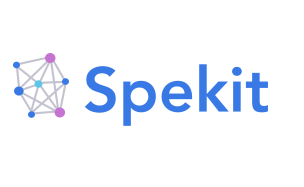ATD Blog
5 Sales Process Steps to Help You Win More Business
Fri Oct 13 2023

A sales process is a series of planned, repeatable steps that map out a sales rep’s process of guiding a prospect to an approved contract and beyond. At points, sales leadership will refine the sales process steps that your team follows to close new business, but it’s also important to think through your approach to selling. Following these five steps can help you win more business:
1. Define and refine your book of business and sales pipeline
Before you pick up the phone, clarify your market. Fail to plan, plan to fail, as the saying goes.
Whoever your ideal prospect is, make sure you can identify decision makers who might champion your cause. While the product, service training, and research are essential to this step, the best salespeople are also curious, constant learners. Their training is never finite.
Market research is vital before jumping in. Your ability to navigate through account, contact, and opportunity histories while onboarding will be critical to your success. Take advantage of opportunities to familiarize yourself with your company’s CRM.
2. Prospecting and communications
Cold calling, networking, and digital outreach can test the mettle of any sales rep, but they’re critical to filling and replenishing the sales funnel. Try to fully understand the roles of the people you connect with to tailor your approach.
Don’t make closing a deal the goal of your prospecting calls. Instead, try to get on a prospect’s calendar for a discovery meeting. You’ll ease the pressure when you build rapport, demonstrating that you value their time. To get a prospect’s buy-in, prove that you understand their business and connect what your company offers with a challenge they face.
3. Discovery conversations and meetings
Discovery meetings can be one-to-one conversations or group calls. They determine whether a prospect has a need that your company can address within a reasonable time and budget. Take notes that you can use to tailor your presentation.
Rather than presenting your products and services, focus on asking questions and practicing active listening to uncover any needs or pain points your business can solve. You’ll want to learn what the prospect can gain from your products and what they may stand to lose if they don’t take action. This will help shape your future conversations. Curiosity can help salespeople build relationships and unearth business needs.
Ask open-ended questions about a customer or prospect’s business rather than giving your value proposition—and be prepared to handle objections.
It’s ideal to wait on giving a sales presentation until you can tailor it to what you learn on your discovery call. You might even find a prospect’s needs don’t align with your product.
4. The sales presentation
A successful sales presentation depends on whether you’ve asked good questions and gathered requirements during your discovery, so that initial work is essential. When preparing, resist the urge to write out your whole presentation on a slide deck—a few words with critical points will go far if you can organically present your notes and match your unique sales proposition with the customer’s needs.
The sales presentation can convey that you genuinely believe in the value of what you are selling. To close a deal, ensure that you’re prepared, polished, and presentable.
5. Close the deal
Your sales enablement team can provide coaching and guidance on contract terms, pricing, and product or service delivery. Sales managers with field experience should share their tips for closing deals. If including a seasoned colleague on a sales call can help close a high-value deal, go for it. Or sales managers can share stories for different closing scenarios in your sales enablement content.
Closing a deal is an exhilarating experience. You never win business if you don’t ask for it, and all of the preparation and perspiration along the way pays off when a prospect agrees to your offer.
6. Post-sale follow-up
Getting a signed sales agreement isn’t the last sales process step. It’s critical for a sales professional to follow up with their new customer to:
Ensure your company is delivering what was promised
See if there might be needs that the initial purchase didn’t address
A closed contract may mean that a manager takes over the lion’s share of interactions with a new customer. Yet, a sales specialist should always keep customers in their orbit for additional opportunities.
Having a repeatable sales process that works for your product, team, and industry will make the difference between success and failure. That alignment requires a similar, repeatable onboarding process and ongoing cross-team communication. Find ways to educate your sales team about the finer details of your company’s sales process and to update them on any changes along the way. You can share a sales process step flowchart, a cheat sheet, or a sales playbook; just don’t hide it under a rock.

